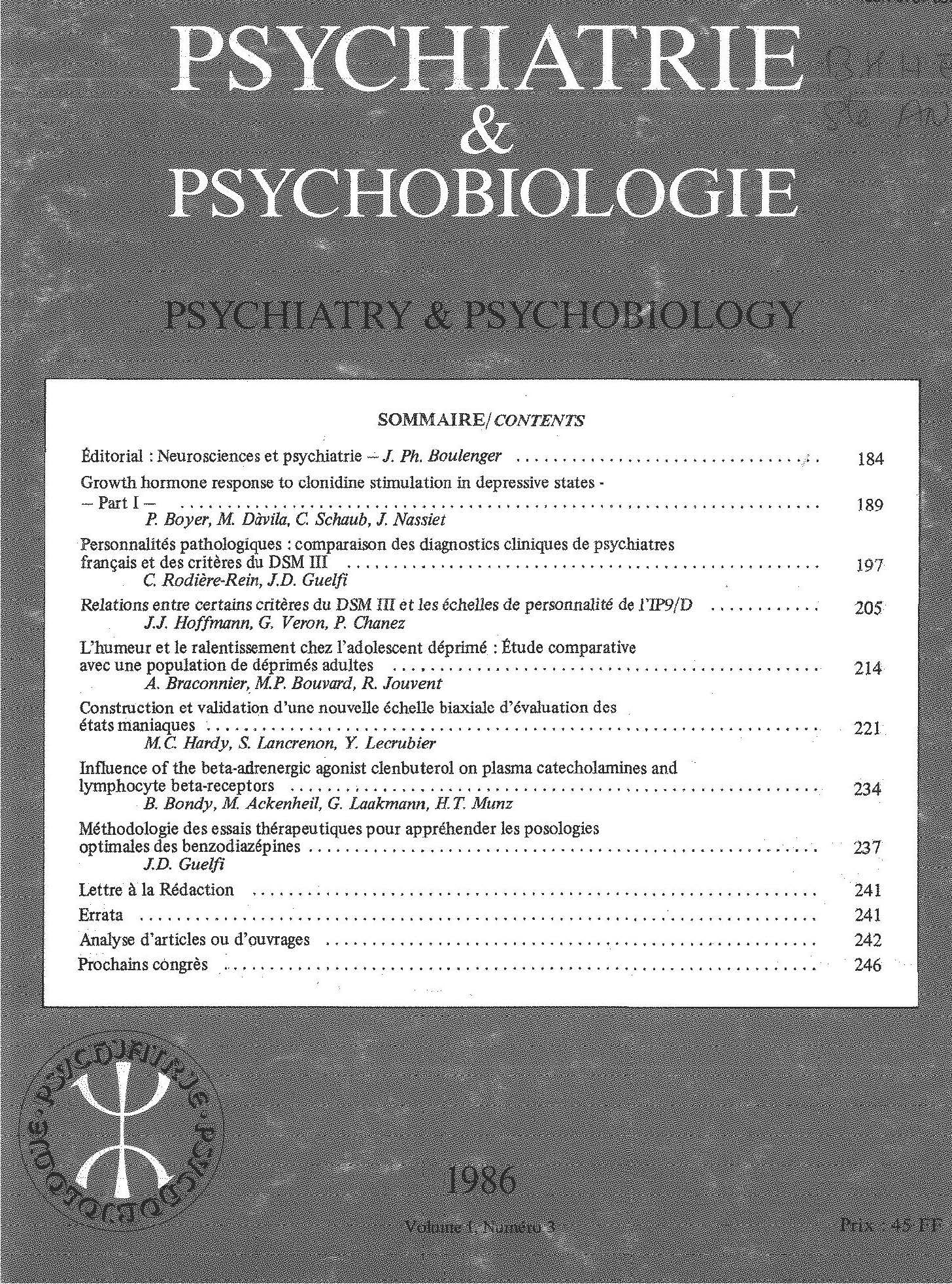Article contents
Higher blood and brain concentrations of imipramine and desipramine seem not to impair anti-immobility effect in mice
Published online by Cambridge University Press: 28 April 2020
Summary
We studied the relationship of blood and brain levels of imipramine (IMI) and/or its active metabolite desipramine (DMI) to behavioural response, in the tail suspension test (TST). Compared to the control group, doses of 3.75, 7.5, 15, 30 and 60 mg/kg of IMI given intraperitoneally reduced immobility scores significantly. There were significant negative correlations between doses, brain levels of IMI, DMI, IMI + DMI, blood levels of IMI, DMI, IMI + DMI and the animal behaviour. Higher level of IMI and its metabolite in brain and in blood did not impair anti-immobility effect. These findings agree with most results found in men treated with IMI, and suggest a linear or sigmoid relationship between the antidepressant concentrations and its biological response.
Résumé
Nous avons étudié le rapport entre les taux sanguins et cérébraux d'imipramine (IMI) et/ou son métabolite actif désipramine (DMI) et la réponse comportementale mesurée à l'aide du tail suspension test (TST). Les doses de 3,75, 7,75, 15, 30 et 60 mg/kg d'IMI administrées par voie intrapéritonéale ont significativement diminué les scores d'immobilité comparés aux scores du groupe témoin. Des corrélations négatives existent entre les doses, les taux cérébraux d'IMI, DMI, IMI-DMI ainsi que les taux sanguins d'IMI, DMI, IMIDMI et le comportement animal. Des taux sanguins et cérébraux plus élevés d'IMI et de son métabolite DMI n ‘ont Pas diminué l'effet anti-immobilité. Ces données sont en accord avec la plupart des résultats trouvés chez l’hommé traiti par l'IMI et suggérent une relation de type linéaire ou sigmoïle entre les concentrations de l’antidépresseur et la réponse biologique.
Keywords
- Type
- Original article
- Information
- Copyright
- Copyright © European Psychiatric Association 1989
References
- 3
- Cited by



Comments
No Comments have been published for this article.